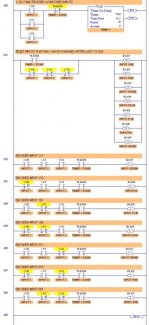I mentioned getting a mulitplever instead of a relay bank simply because it would be cheaper. Instead of selecting the relays one by one, you would instead select the relays with binary coded bits. So it is probably an even better educational experience.
I tried opening the link, but didn't work. I then followed the sections in the link text and navigated to this section: Home > Category: ICs > Category: ICs & Semiconductors > ICs & Semiconductors / Analog/Linear > ICs & Semiconductors / Analog/Linear / Multiplexer or Switch
Hmm. All I see there are what look like microprocessors. I suppose these are the brains of the multiplexer that I'd need to wire up to the inputs and outputs, along with other circuitry... I need to research this first before making my decision. First question that comes to mind is how to send these binary coded bits to it from the PLC... I'm just getting stared in PLCs, but it seems like I'd need a special "binary" card, if there's such a thing; use multiple output discrete channels to send set the bits, or...??? Do you know a link where I could read up on this?
Thanks!
Last edited:




